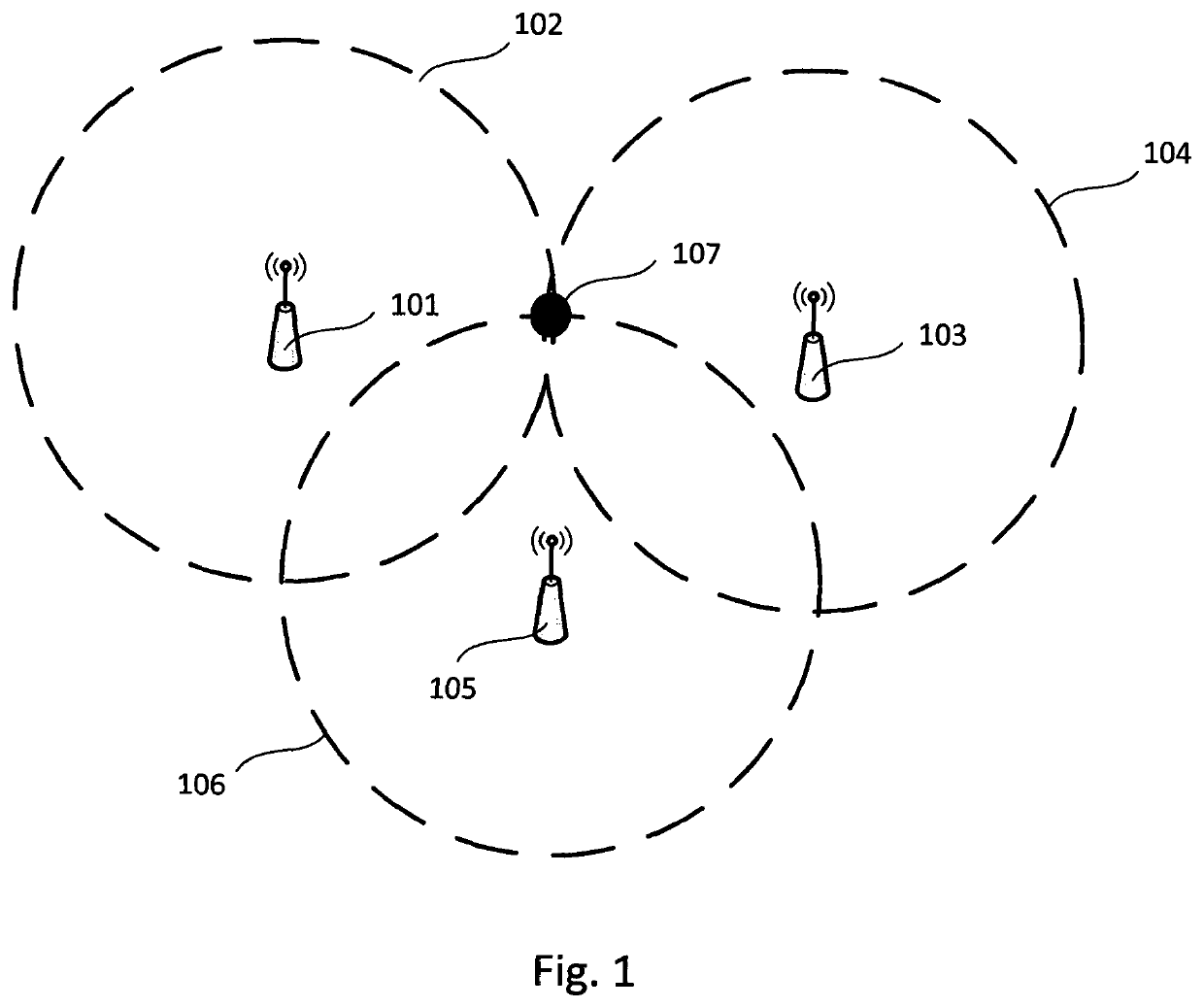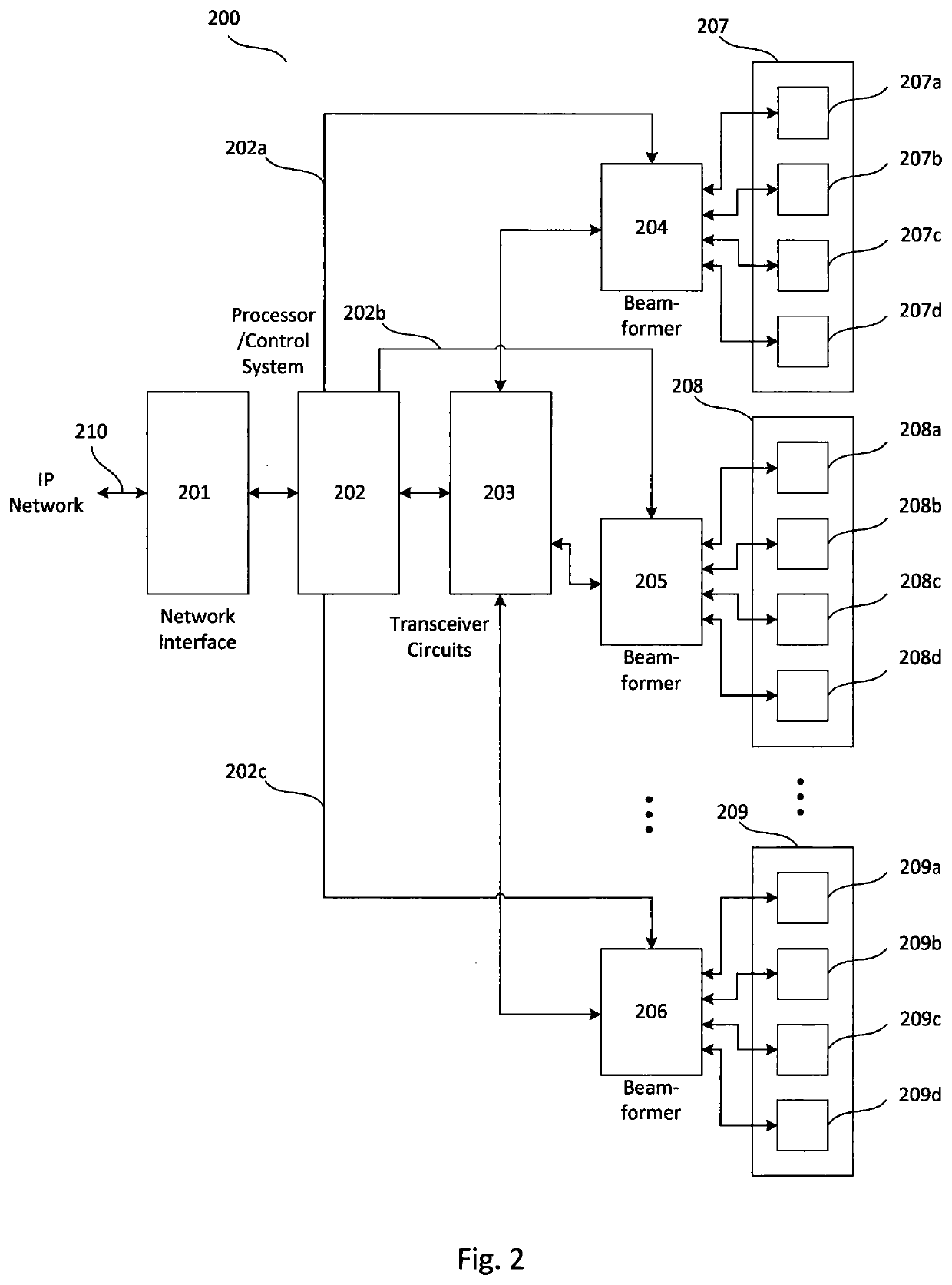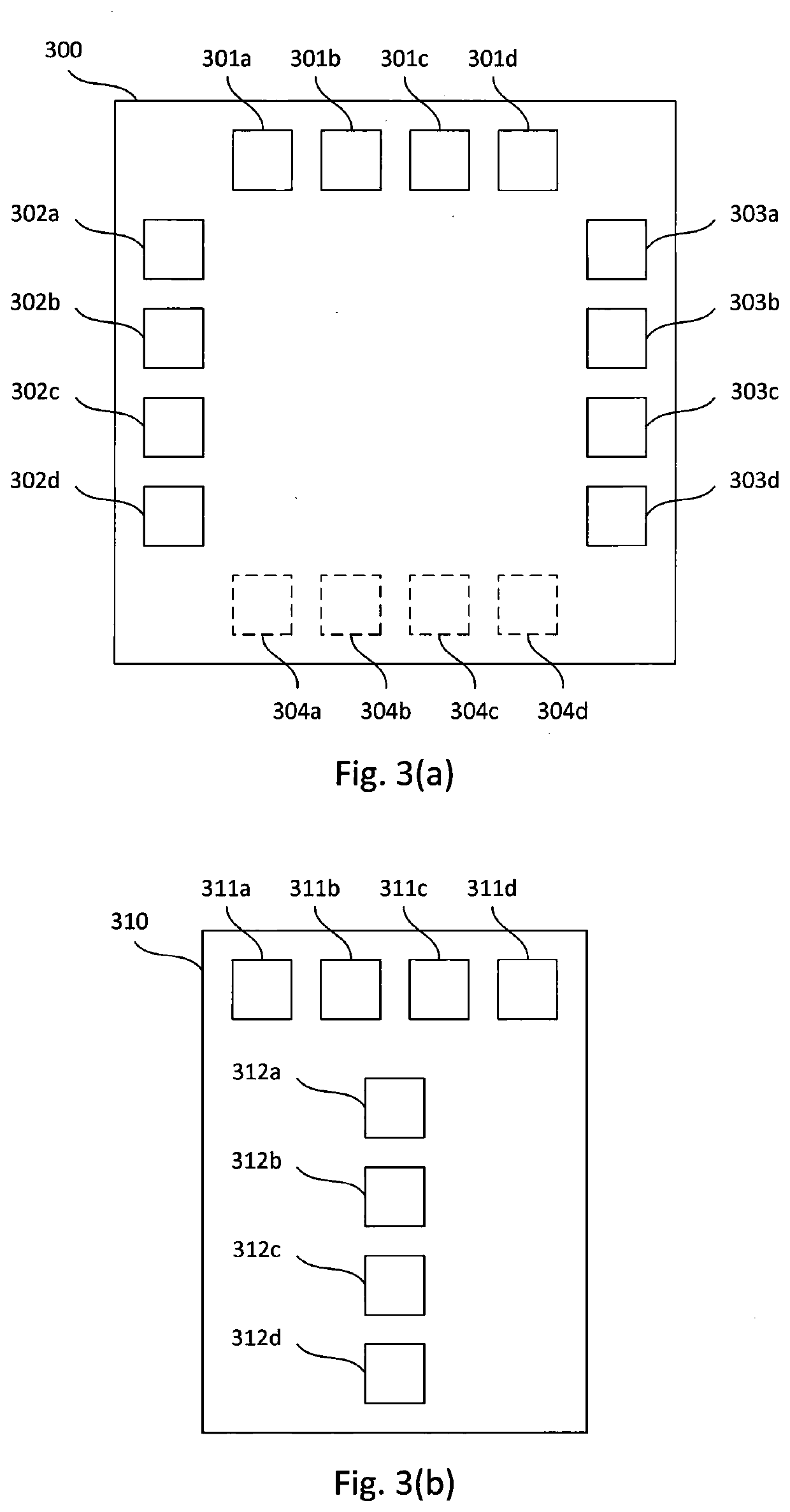Antenna array
an antenna array and antenna technology, applied in the field of wi-fi equipment, can solve the problems of beacon-based spatial location systems, infrastructure itself loses knowledge of the location of the ue, and cannot work, so as to maximise minimise the strength of the signal received
- Summary
- Abstract
- Description
- Claims
- Application Information
AI Technical Summary
Benefits of technology
Problems solved by technology
Method used
Image
Examples
second embodiment
[0143]In a spatial location or geolocation system, independently formed and steered beams emanating from an access point may be steered to enable or minimise communication with a UE and an intersection of two or more regions of an antenna radiation pattern within which poor communications between a UE and an access point result, where two or more regions of an antenna radiation pattern emanate from an access point, which may be the same access point in both cases, may be used wholly or in part to approximately spatially-locate a UE which is in communication with an access point. Regions of an antenna radiation pattern within which poor communications between a UE and an access point may occur and as discussed above are sometimes referred to as ‘nulls’ in a radiation pattern.
third embodiment
[0144]In a spatial location or geolocation system, independently formed and steered beams emanating from an access point may be steered and signal strength measurements may be made and stored of signals emanating from a UE during a steering or beam sweeping process to form a stored measured radiation pattern, with some or all of those stored signal strength measurements forming the stored radiation pattern being compared or correlated with one or more predetermined reference antenna radiation patterns in order to determine a steering angle or bearing at which a measured and a predetermined radiation pattern are most similar. This steering angle may then be reported as a bearing of a UE relative to a datum, such as a boresight direction of an antenna array forming part of a steerable antenna system or a plane of an antenna array forming part of a steerable antenna system.
fourth embodiment
[0145]In a spatial location or geolocation system, independently formed and steered beams emanating from an access point may be steered and signal strength measurements may be made by a UE and stored of signals emanating from an access point and reported back to an access point by a UE during a steering or beam sweeping process to form a stored measured radiation pattern, with some or all of those stored signal strength measurements forming the stored radiation pattern being compared or correlated with one or more predetermined reference antenna radiation patterns in order to determine a steering angle or bearing at which a measured and a predetermined radiation pattern are most similar. This steering angle may then be reported as a bearing of a UE relative to a datum, such as a boresight direction of an antenna array forming part of a steerable antenna system or a plane of an antenna array forming part of a steerable antenna system.
[0146]In still further variants of the first and s...
PUM
 Login to View More
Login to View More Abstract
Description
Claims
Application Information
 Login to View More
Login to View More - R&D
- Intellectual Property
- Life Sciences
- Materials
- Tech Scout
- Unparalleled Data Quality
- Higher Quality Content
- 60% Fewer Hallucinations
Browse by: Latest US Patents, China's latest patents, Technical Efficacy Thesaurus, Application Domain, Technology Topic, Popular Technical Reports.
© 2025 PatSnap. All rights reserved.Legal|Privacy policy|Modern Slavery Act Transparency Statement|Sitemap|About US| Contact US: help@patsnap.com



